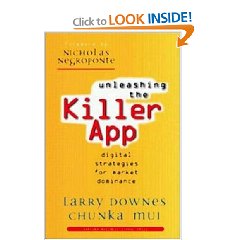Review: The Structure of Scientific Revolutions
5 Star, Change & Innovation, Culture, Research, Economics, Education (General), Education (Universities), Games, Models, & Simulations, History, Information Operations, Information Society, Intelligence (Commercial), Intelligence (Extra-Terrestrial), Intelligence (Government/Secret), Intelligence (Public), Strategy, Truth & Reconciliation, Values, Ethics, Sustainable Evolution, Voices Lost (Indigenous, Gender, Poor, Marginalized)Review: World Brain
5 Star, Consciousness & Social IQ, Culture, Research, Decision-Making & Decision-Support, Democracy, Economics, Education (General), Education (Universities), Future, History, Information Operations, Information Society, Intelligence (Collective & Quantum), Intelligence (Commercial), Intelligence (Extra-Terrestrial), Intelligence (Government/Secret), Intelligence (Public), Intelligence (Wealth of Networks), Misinformation & Propaganda, Philosophy, StrategyReview: Preventing World War III–A Realistic Grand Strategy
5 Star, StrategyReview: Informing Statecraft–Intelligence for a New Century
4 Star, Diplomacy, Intelligence (Government/Secret), Strategy“It is not too gross an exaggeration that when considering any given threat, DIA will overestimate, CIA will underestimate, and INR will blame the U.S. for it.” From his opening chapter and his distinction between static, dynamic, and technical facts, on through a brilliant summary of the post-war spy on page 103 and lengthy sections on how we've gotten it wrong, how we can get it right, and what is needed in the way of reform, I found this book worthy of study. An analyst and political staffer by nature, the strength of this book rests on the premise in the title: that intelligence should be about informing policy, not about collecting secrets for secrets' sake.

Review: Cyberwar–Security, Strategy, and Conflict in the Information Age
5 Star, Asymmetric, Cyber, Hacking, Odd War, Information Operations, Strategy, War & Face of Battle1998 JFQ The Asymmetric Threat: Listening to the Debate
Articles & Chapters, Asymmetric, Cyber, Hacking, Odd War, Complexity & Catastrophe, Complexity & Resilience, Diplomacy, Disaster Relief, Intelligence (Government/Secret), Intelligence (Public), Peace, Poverty, & Middle Class, Strategy, Threats (Emerging & Perennial), War & Face of Battle
FIXED 31 March 2013
PDF (7 Pages): JFQ Asymmetric Threat Steele
“The Asymmetric Threat: Listening to the Debate,” published in the Winter 1998-1999 issue, is a concise summary of the Army Strategy Conference of 1998. Click on the icon below to read the summary of the Army Strategy Conference of 2008, which JFQ has declined to publish.










